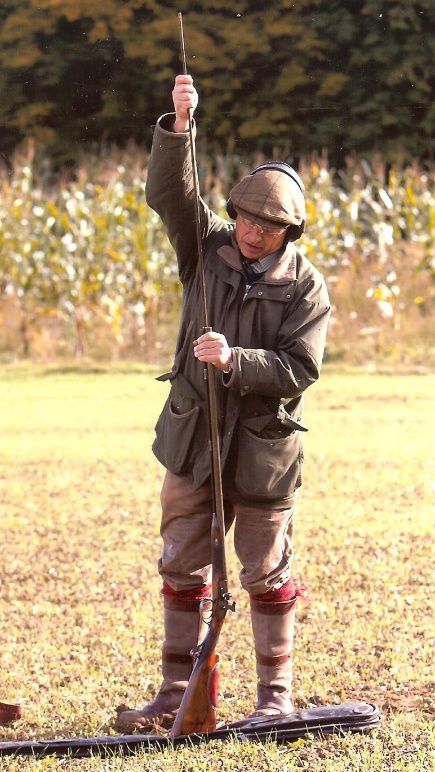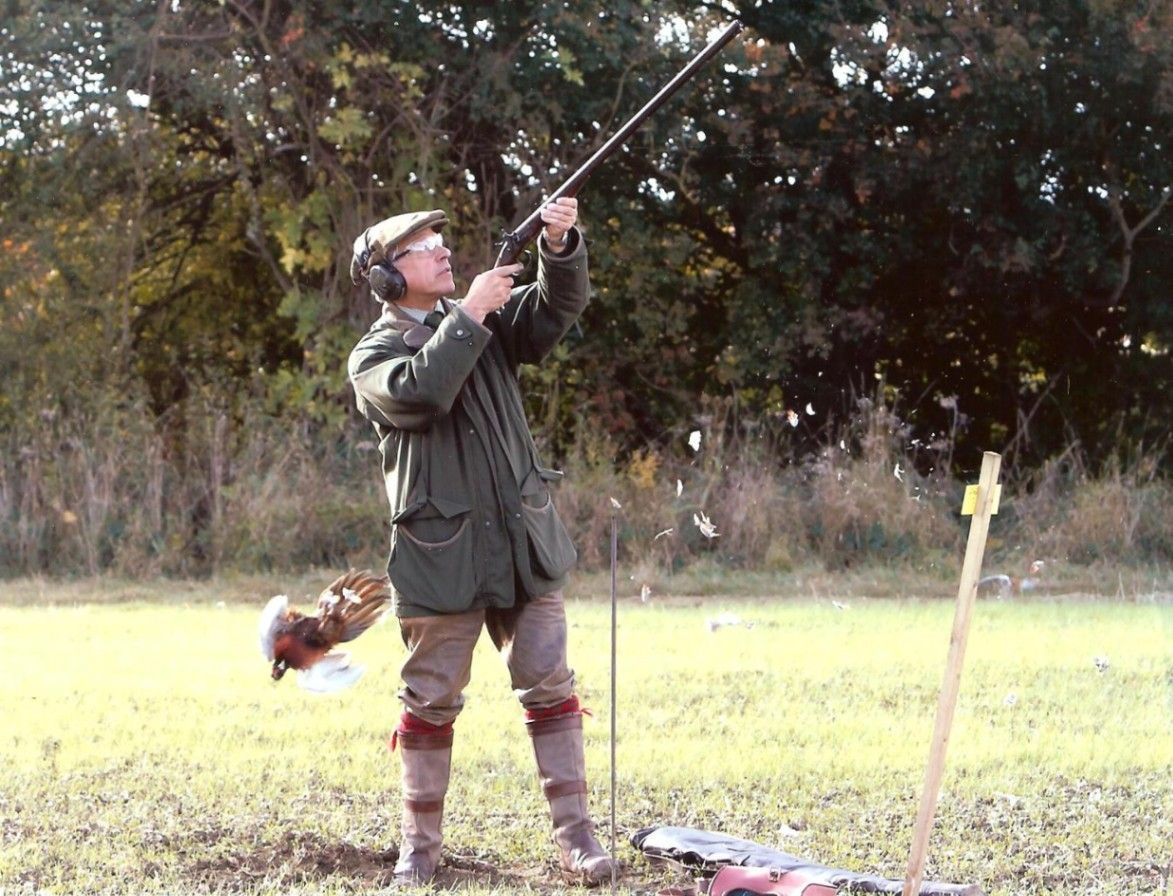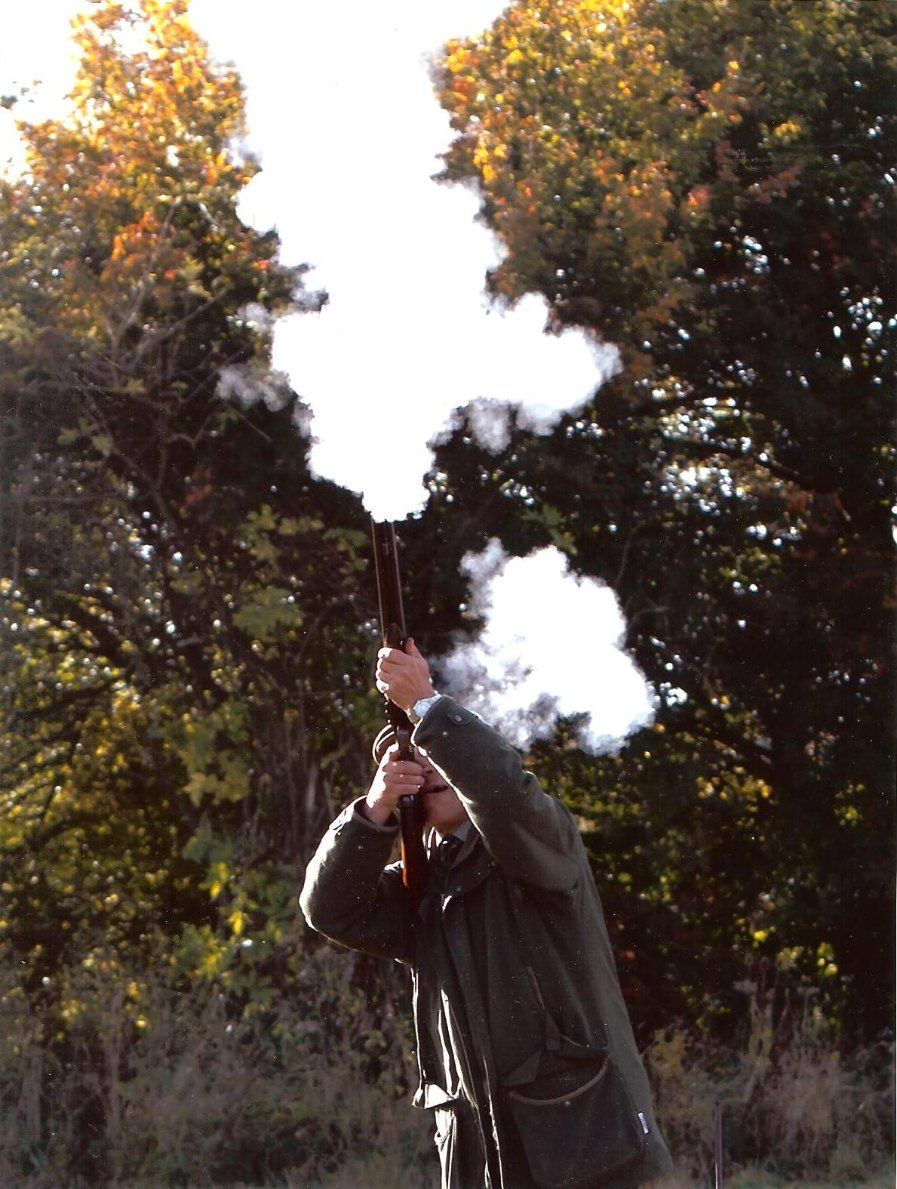From boyhood enthusiasm to grown up fun.
I well remember as a boy discovering that a lead ball in a catapult was much more effective than a stone. We had to wait until my mother was out before using the gas stove to melt down a strip of lead “borrowed” from the potting shed roof. I think the ball mould had come from my friend Smudge’s attic and it cast a very good 1 ounce projectile.
I was extremely proud of my first pigeon which was felled as it lifted from a branch of an oak tree in the local park. If it had stayed where it sat, I would have missed and I cannot claim any credit for having given it a bit of forward allowance! Anyway, my long-suffering mother plucked and cooked it and it was absolutely delicious!
Of course, boys will be boys and in those days penny bangers could easily be acquired instead of sweets with weekly pocket money equivalent to 1d for each year of my age. Bangers are small cardboard tubes filled with gunpowder and it was not a very big step to think about using that powder to propel those lead balls. It is horrifying to recall making a gun out of a length of curtain rod wired to a rough stock cut from an old floorboard. The ignition system was a hole drilled in the curtain rod at the breech end into which a banger fuse was wedged. We called the weapon a “fizz-bang”! Somehow, we survived as did the fascination with guns and shooting.
So, fast forward through happy school days, the misery of accounting exams and then a reasonably successful career in finance ending with the sale of the company in 2004. That provided the time and wherewithal to enable me to start of a collection of antique firearms, which turned into a small business. There are two rules for The Flintlock Collection (www.flintlockcollection.com ); firstly, always buy the best I can afford and secondly, everything is for sale! Although I have to admit that a few items are priced to sell slowly!
With the collection growing and a love of game shooting it was not long before I fell in with a group of enthusiasts who actually shoot with these beautiful old things. For example, I met and shot driven pheasants with the European Flintlock champion. Who knew that such a title was keenly competed for?
He taught me a lot but I soon discovered that although I really should persevere with flint, it is considerably less frustrating to use a percussion shotgun. As readers will know, the flintlock ignition system was used for nearly 200 years from the mid-17th century until the 1820s when percussion took over. And so I now have a significant collection of fine muzzle loading percussion shotguns made by the top English gunmakers of their time.
No one can accuse the “Powderers” of being greedy guns and a typical bag is less than half of what might be achieved with “suppository” guns. It takes a full 60 seconds to reload a double-barrelled muzzle loader. It is important to concentrate so as not to drop anything or double charge either barrel. Firstly, powder from a measured flask followed by a lubricated wad firmly rammed down, then the shot measured from another flask and an overshot card to stop the shot from falling out. The last move is the percussion cap, which is placed from a capper onto the nipple. Keep the gun elevated, pull the hammers back onto full cock and you are finally ready to look up again.

Detonated black powder expands all the way up the barrel and the recoil feels more like a push than the crack from nitro propellant. The muzzle velocity may be only 70% of modern alternatives but 10 yards or so down range it has almost caught up and it is surprising how little comparative delay there seems to be. The important thing is to keep the barrels moving; something we all ought to do anyway!
There are few better feelings than knocking down a 35 yard pheasant with a 200 year old gun and I defy anyone to have more fun in the field than us powderers!


